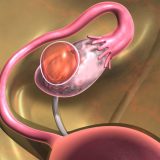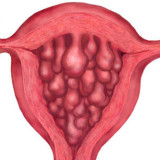Tailbone cyst surgery is the most common and effective way to cure the disease, though not perfect. In general, 6 invasive methods are performed. A surgeon choses one depending on the complexity of the case, the stage, the capsule growing down.
6 tailbone cyst surgery methods
- Open wound. The likelihood of recurrence is the lowest choosing this method. But the recovery period is the longest, it takes 2 months to resume normal life. Open wound tailbone cyst surgery is often held for complicated forms of the disease. After the surgery the cyst is completely removed. This creates a natural drainage because the wound was sutured to the bottom. The patient needs to be under attentive medical supervision after the surgery.
- Closed wound. Recovery period is much easier and short with this tailbone cyst surgery. But the likelihood of relapse increases. Method with a closed wound is selected if the cyst is in remission. In this case the possibility of relapse is reduced. The cyst is removed completely, a surgeon sews the wound up and leaves a small hole for drainage. Bandages change should be done every day to heal the wounds. The stitches will be taken off in 8-14 weeks.
- Bascom operation. Bascom tailbone cyst surgery is one of the most invasive. Skin is removed from the primary opening to the secondary. Secondary opening is the drain and the primary one is fully sewn. Through the drainage from the wound infiltration is removed.
- Karydakis operation. Skin is also removed during the tailbone cyst surgery. The wound is made down the midline of buttock crease. Recovery time for this surgery is not long. Also, the probability of relapse decreases.
- Sinusotomy is all like the other operations. But the cut is made with electrical current. The operation is performed only with absence of inflammation and pus in the cyst.
- Laser operation is innovated modern way to get rid of the cyst. The excision is made with laser ray. Patients are able to go back to their regular life shortly.
Anesthesia and tailbone cyst surgery
Anesthesia is important whatever tailbone cyst surgery is being performed. Curious or cautious patients want to know everything there is to know about the intricacies of this process. They need to take it seriously, but remember a doctor is still the best informant.
Anesthesia during tailbone cyst surgery does not differ much from anesthesia during other operations.
Anesthesiologist chooses one of the following methods:
- Local anesthesia
- Epidural anesthesia
- General anesthesia
The choice of method depends on complexity of the operation, possible allergies to medicines, health state, and even the results of previous anesthesia (if any). A patient should follow all the directions and instructions of an anesthesiologist. He will tell what and when to eat before and after the operation, advice on sleep and other details.













